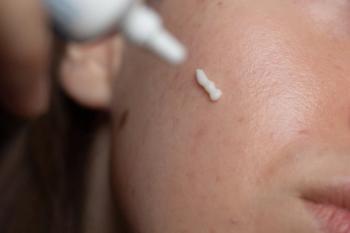
No Link Found Between JAK Inhibitor Use and Unprovoked Venous Thromboembolisms in Adults with Atopic Dermatitis
Key Takeaways
- No association was found between JAKi use and unprovoked VTEs in severe AD patients, supporting their safety from a thrombotic risk perspective.
- The study utilized a large French national health database, including adults with severe AD, and found VTE rates comparable to the general population.
The study offers reassurance regarding the safety profile of JAKis in patients with severe atopic dermatitis, particularly concerning their impact on venous thromboembolic events.
No association was observed between Janus kinase inhibitor (JAKi) use and unprovoked venous thromboembolic events (VTEs) in adults with severe atopic dermatitis (AD), according to a recent study published in the Journal of the European Academy of Dermatology and Venereology.1
The findings support current prescribing guidelines, emphasizing that JAK inhibitors can be considered safe from a thrombotic risk perspective for this patient population.
Background and Methods
While clinical trials have demonstrated the efficacy of JAKs, concerns about adverse events, particularly VTE, have emerged, paralleling reports from other inflammatory diseases. In rheumatoid arthritis, multiple studies have indicated an elevated risk of VTE associated with JAK inhibitor therapy.2-3
The recent study aimed to investigate whether JAKi exposure increases the risk of unprovoked VTEs in adults with severe AD on a national scale in France. The investigation was a retrospective, case–control study within a French national cohort, utilizing the Système National des Données de Santé, a large, population-wide health database covering approximately 99% of the French population.
The study included adults aged 18 and above with severe AD. Inclusion criteria mandated at least 1 dispensed systemic AD treatment during the study period (2017–2023), with a focus on those without recent systemic therapy.
Findings
The study identified 48 patients with unprovoked VTEs (cases), with a median age of 71 years (interquartile range 57–80). The majority were male (62.5%), and 2/3s had a Charlson Comorbidity Index of 0, indicating minimal co-existing illness. Most VTE cases were managed outpatient (68.7%), with equal representation of deep vein thrombosis and pulmonary embolism.
None of the VTE cases had been prescribed a JAKi within 3 to 6 months prior to their event. Similarly, none of the controls reported recent JAKi use.
The observed rate of VTEs among adults with severe AD during the study period was comparable to the general population, further supporting the safety profile of systemic AD treatments, including JAK inhibitors.
Conclusions
The findings from this large, population-based French cohort provide evidence that JAK inhibitors, used appropriately in severe AD, are not associated with an increased risk of unprovoked VTEs.
While these results are encouraging, several limitations should be considered, including relatively low JAKi use during the study period (leading to limited exposure data), the study's retrospective nature, and potential for residual confounding.
Further prospective, long-term studies are necessary to fully understand the thrombotic profile of newer JAKi agents in dermatologic indications.
References
- Droitcourt C, Kerbrat S, Staumont-Salle D, Lescoat A, Oger E, Scailteux LM. Venous thromboembolic events in patients treated with Janus kinase inhibitors for atopic dermatitis. J Eur Acad Dermatol Venereol. Published online April 3, 2025.
doi:10.1111/jdv.20682 - Mori S, Ogata F, Tsunoda R. Risk of venous thromboembolism associated with Janus kinase inhibitors for rheumatoid arthritis: case presentation and literature review. Clin Rheumatol. 2021;40(11):4457-4471.
doi:10.1007/s10067-021-05911-4 - Molander V, Bower H, Frisell T, et al. Venous thromboembolism with JAK inhibitors and other immune-modulatory drugs: a Swedish comparative safety study among patients with rheumatoid arthritis. Ann Rheum Dis. 2023;82(2):189-197.
doi:10.1136/ard-2022-223050
Newsletter
Like what you’re reading? Subscribe to Dermatology Times for weekly updates on therapies, innovations, and real-world practice tips.


















